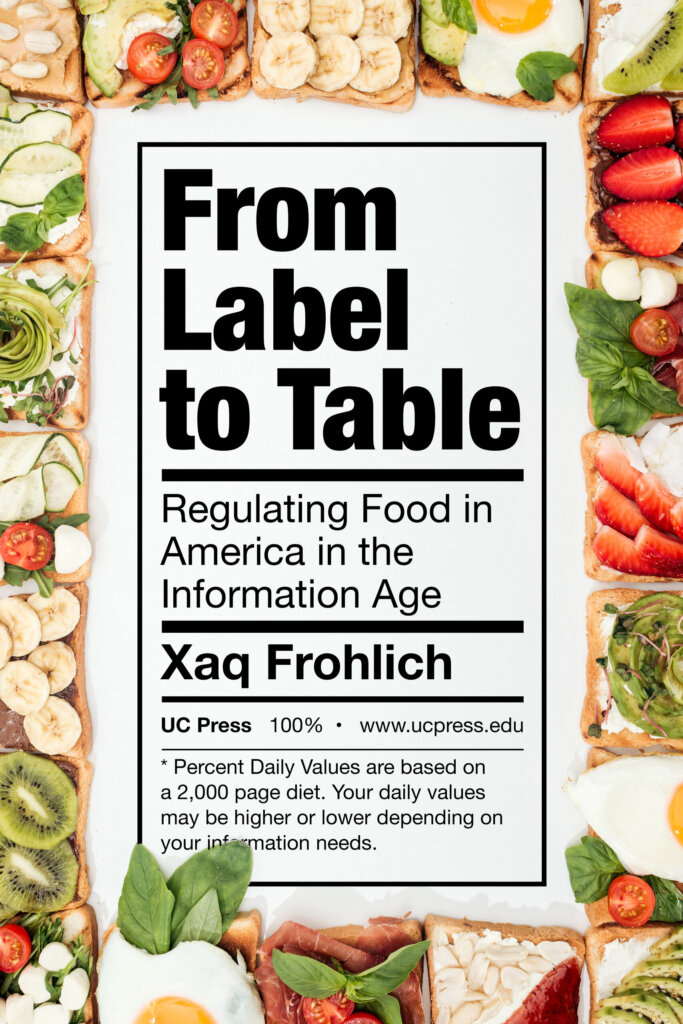by Xaq Frohlich, author of From Label to Table: Regulating Food in America in the Information Age
What does it mean to label a food “healthy”? Is there too much sugar or salt in processed foods, and what can be done about it? Are those front-of-package claims, the ones that say “part of a balanced diet,” just marketing, or does someone actually regulate them? Is oat milk a “milk,” or does milk have to come from a cow? All of these questions made the news this past year because they have been at the center of the Food and Drug Administration’s (FDA) efforts to reform and update its food standards and labeling policies. Supporters say the FDA’s efforts to answers these questions are long overdue, needed to bring the government’s system into alignment with changing consumer trends and urgent public health needs. Critics, on the other hand, argue the rule changes are inadequate, inconsistent, or misleading, and that they remove choice from consumers who should be able to make their own decisions based on their own lifestyles.
How did we get here? How did the FDA get pulled into these food pantry debates? My new book, From Label to Table: Regulating Food in America in the Information Age, charts the history of the agency’s food policies from the 1930s to present, explaining how a variety of public health concerns, business interests, social movements, and consumer politics found their way onto the food label. From evolving rules about health claims and nutrition labeling, to perennial controversies over ingredient bans and risk labels, readers concerned about our present-day food system will find that many of those past debates look quite familiar, but they will also be surprised by how much food labels (and marketing) have changed over the past century.
Since the appearance of the FDA’s first ingredients and nutrition panels in the 1970s, there has been an avalanche of food labels addressing a wide range of social and political issues, such that the consumer today is awash in a sea of product information. My book argues that this ever-increasing amount of information has not resulted in more satisfied or even more empowered consumers. Good regulation ultimately requires building trust in people and institutions, not just providing more information. This brings us back to the politics at the heart of current FDA initiatives: who gets to decide what goes on the label, and do we trust them?

